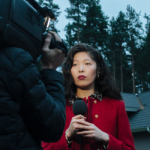Conceptual photography is a type of photography that uses pictures to convey ideas. Each image delivers a potent message that can get our minds to understand extremely abstract ideas. With time, this kind of art has grown in significance and is now one of the categories in the prestigious Sony World Photography Awards.
A concept photoshoot idea requires a lot of brainstorming, which may be extremely difficult at times. Continue reading this article to learn more about conceptual photography ideas for beginners.
Table of content
What is Conceptual Photography
How to Find Inspiration for Conceptual Photography
How to Make a Conceptual Photograph
5 Tips for Creating a Concept Photoshoot
What is Conceptual Photography?
Conceptual photography or concept shoot is not limited to any one subject. It is more concept-driven photography. You start with a notion or tale, then utilize a camera and artistic software to make it come to life. A style of fine art photography known as conceptual photography involves visual artists going beyond documenting to present an original idea or using technology to produce an image rather than just taking it.
Though it belongs to its own category, conceptual photography may draw inspiration from many other photographic subgenres. Landscape photography, still life photography, portraiture, and even documentary photography may all be combined into one conceptual image. There are no restrictions on how to go about making conceptual pictures, yet surrealism and abstract art genres frequently play a significant part in their conception.
Additionally, conceptual images may be utilized in commercial photography even when they originate from the photographer’s personal interests and ideas. Conceptual images are frequently used in advertising to promote goods and convey ideas, from high fashion shots to advertisements for beauty products.
How to Find Inspiration for Conceptual Photography?
Look at and study art, not just photography, and follow your favorite conceptual artists. Visit art exhibits and museums to just enjoy the work. You can learn photography skills and software, but the primary problem we notice in novices is a lack of vision, therefore developing your taste and aesthetic vision is crucial.
Mood boards are a terrific approach to developing a concept, whether you want to create lovely portraits, distant landscapes, or weird still-life compositions. Search social media platforms like Behance for exceptional examples of conceptual photography or take inspiration from magazines and daily life. Simply attempt to recreate a picture you like. If you’re just getting started with this kind of photography, this exercise may be beneficial.
How to Make a Conceptual Photograph?
It’s time to start creating once you’ve found inspiration and have an idea of what you want. The following points will help you execute your conceptual photography ideas:
Sketch your idea and plan for the shoot.
Most see the concept first, and then they draw it out in Adobe Photoshop or Illustrator, occasionally with color. This makes it easier for them to picture the idea. Additionally, it’s particularly beneficial when you’re working in a group. You may make your sketch as simple as stick figures and simple notations, or you can make it more intricate. As long as it aids in turning your concept into something concrete.
Photographer Michael David Adams, who specializes in surreal portraiture and concept art, advises breaking down your sketch into its component parts. Write down any notes you wish to make on lighting, props, color schemes, composition, or any other aspect of your idea before using them to plan how to film it.
Gather your elements.
In most cases, we don’t just take one photo; we gather materials to later create something else in Photoshop. Many conceptual photographers use composites, in which several photographs are combined and blended to create the final image. These photos are not all flawlessly arranged frames; rather, they are straightforward photographs of the many parts or components that the finished image will include.
You may organize what you need to shoot with the aid of your notes and sketches. If you’re creating a composite, pay close attention to the light and color. The two photos won’t seem consistent if one is backlighting and the other is side-lit.
Similarly, if one photo was taken indoors at a lower color temperature and another was taken outside during golden hour, they wouldn’t appear to belong together. As much as possible, do in-camera tasks to save time later on while performing intricate photo adjustments. You should plan your set and shoot as much as you can on that set in order to produce a realistic composite.
Create your photo.
It’s time to put your masterpiece together once you’ve gathered all of your components. The majority of photographers then move to their computers. The most exciting aspect is when they can finally see what their image will look like; this is when all the magic happens.
While some conceptual photographs may just need a little editing or retouching to be finished, others may need more effort to get your desired results. The only steps in post-production are the elements, masking, and color matching.
5 Tips for Creating a Concept Photoshoot
You need to be better familiar with the fundamentals if you want to make this kind of picture successfully. You read it correctly! The key is to get back to the fundamentals.
Why? Because if you establish a notion just on non-existent components, you’ll probably miss the entire point. If you want to execute your conceptual photography idea follow the following tips:
1. Brainstorm
To develop your own notion, do your study, make notes, and experiment with a variety of concepts.
2. Sketch
Most do this with every session. You don’t need to be an accomplished artist. Simply draw the positions, looks, and fashions you wish to test. Draw the props you intend to utilize, giving each one a unique color and texture.
3. Create a Mood
One of the key resources for developing a notion is constructing a mood board. However, it’s crucial to complete this once you’ve drawn your own thoughts. Without brainstorming and drawing before creating a mood board, you will only be inspired by what you see. Instead, utilize it to gather illustrations of the idea you’ve previously developed.
4. Select a Location
It’s time to select a place after you have a clear image of where your notion is going. If you follow the steps previously indicated, you can accomplish this very quickly.
Most likely, choosing a place won’t take much time if you see your thoughts fully represented in your mood board. However, it’s crucial to consider the surroundings, colors, and lighting that are accessible at the venue. A mood will be produced by all of these components. Just be sure that the setting you select creates the mood you want for your images.
5. Check the Weather
The weather has the same effect on mood as a location does. Do you prefer rainy or overcast weather? Or does your idea require more of a feeling of a sunny day? Plan carefully because the weather will significantly influence the atmosphere of your images.
Conclusion
In conclusion, as a conceptual photographer, the idea is the key and there is always something more you can do. When you first start as a beginner and you have a conceptual photography idea, don’t stress too much about your equipment or technique just take pleasure in the creative process of watching your ideas come to reality. You may use a variety of inspirations, artists, and concepts to assist you in coming up with your own after you start to build a collection of inspiration. In this article, we have mentioned some tips that will help you in your concept shoot as a beginner.



















